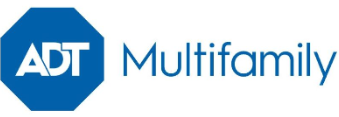Smart Devices: A Financial Guide For Multifamily Owners

From thermostats and locks to leak detectors and lighting, smart-home controls are becoming increasingly common. Among multifamily residents, 43% reported owning a smart-home device in 2020, compared to 30% in 2019, according to a report from Parks & Associates.
The younger renters are, the more likely they are to want connected communities. A report from the National Apartment Association found that 86% of Gen Z renters said that the presence of security and access control features and a WiFi-enabled community would make a significant impact on their rental decisions.
Even though smart technology is quickly becoming the norm, multifamily owners, developers and property managers still sometimes balk at the high upfront cost of installing smart devices at their properties. Building stakeholders are also skeptical about how much their tenants will value those upgrades — and whether they’ll be willing to pay a monthly fee for them.
“You can see study after study that residents want smart device upgrades and are more than willing to pay extra for them,” said Marshall Friday, East Coast director at ADT Multifamily. “But as an owner or property manager, it’s still scary to add to your building’s expenses and to raise your residents' monthly charges.”
Though ADT is best known as a security company, its multifamily division focuses on bringing smart technology to residential communities. Friday's team has been working to make smart device systems financially feasible for any multifamily community, whether it is in development, under construction or looking to renovate and upgrade.
Existing Construction
For existing buildings that are considering renovations, the upfront costs of buying smart device equipment for every unit may be a lot to swallow. For these sorts of owners, Friday said, it can often make more sense to lease smart device equipment than to buy it. ADT Multifamily now offers subscription models for its smart device programs, allowing owners and property managers to bring on smart devices as an operational cost rather than a down payment.
“You don’t necessarily need a large cash flow to get smart devices set up,” Friday said. “Operators we’ve worked with usually find that residents are willing to pay more per month than the subscription charges actually cost, so it becomes a driver of operating income rather than an expense.”
The payment plans for ADT Multifamily’s smart device subscriptions can also be phased in over a year to make sure that building owners can phase in cost upgrades for residents slowly, along with their leases. Owners have to pay 25% of the subscription bill for the first quarter that they lease the equipment and 50% for the second quarter. Full billing only kicks in after 10 months, Friday said, and the apartment community can get the smart devices essentially for free for the first quarter.
Development And New Construction
When a developer wants to invest in smart device technology for a building that is still under development or in construction, it usually makes sense to buy the equipment outright. Most developers will be making large capital expenditures for construction anyway, and smart devices can make up a small part of an overall technology budget. Removing the operational expense of a smart device subscription can mean higher NOI upon lease-up and a higher asking price for the building once it trades hands.
However, there are some cases of new construction where leasing equipment may still make sense, like if a developer is trying to keep capital expenditures for a building as low as possible.
Sometimes, Friday said, developers are hesitant to buy smart device hardware that they worry might become obsolete in a few years. To eliminate that doubt, ADT Multifamily partners with best-in-class producers of smart devices.
“When smart device companies make upgrades, they’re primarily software-based, not hardware,” Friday said. “Think about the last few generations of the iPhone. Sure, the new processor might be a little better, but it’s still the same technology. Once you install the hardware, it’s not going to change.”
Do Renters Even Want Smart Tech?
Whether they are in development or undergoing a renovation, owners and property managers are likely to ask themselves whether adding smart devices is really worth the trouble and expense. For the clients he has worked with — who have the benefit of hindsight — Friday said the answer is a resounding yes.
At a 244-unit multifamily community in Houston, Friday helped an owner roll out a smart device program that allowed residents to choose whether or not to add smart devices to their units. Among the hundreds of residents, only two declined to be part of the upgrade. The owner informed them that the upgrades would be made at the end of their current lease, either for a renewal or the next renter.
“Even before their leases were up, those two renters came back and asked to have their units upgraded as well,” Friday said. “They saw everybody else’s locks and thermostats and decided they wanted the same convenience and performance as well.”
This article was produced in collaboration between ADT Multifamily and Studio B. Bisnow news staff was not involved in the production of this content.
Studio B is Bisnow’s in-house content and design studio. To learn more about how Studio B can help your team, reach out to studio@bisnow.com.

